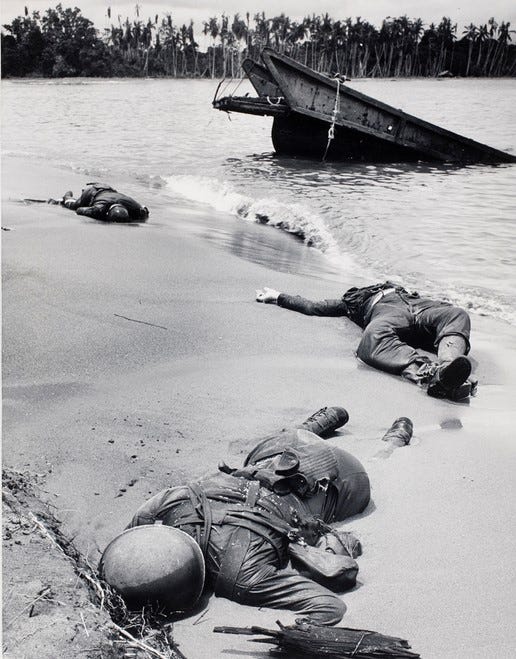George Strock and the photo Life magazine waited 9 months to publish
The photo at the bottom of today’s newsletter is one of the most significant of World War II, its mere existence controversial enough that it took nine months for the public to see it.
George Strock, born on July 3, 1911 in Dyersville, Iowa, captured the gut-wrenching image on a beach at Buna-Gona in New Guinea, sometime in the final days of 1942 or the first few days of 1943.
The Life magazine photographer knew publication wouldn't come easy, as U.S. censorship policies at the time prohibited photos of dead American servicemen. But the magazine fought, over the course of months, for the image to be seen.
Life's young Washington correspondent, Cal Whipple, was especially passionate on the topic, arguing to government officials that Americans needed to see the cold reality of what their fighting men were actually experiencing in the field.
Elmer Davis, head of the Office of War Information, finally agreed and gave the go-ahead with President Roosevelt's blessing. The photo appeared on a full page in the September 20, 1943, issue, with the page preceding it devoted to an editorial explaining the editors' decision to publish it.
"Why print this picture, anyway, of three American boys dead upon an alien shore?" the editors wrote. "Is it to hurt people? To be morbid? Those are not the reasons.
"The reason is that words are never enough. The eye sees. The mind knows. The heart feels. But the words do not exist to make us see, or know, or feel what it is like, what actually happens. The words are never right."
They wrote about how they believed when they initially ran a series of Strock's less controversial photos from Buna over two issues in February 1943 that they should have been permitted to publish this one, too.
"And the reason we print it now is that, last week, President Roosevelt and Elmer Davis and the War Department decided that the American people ought to be able to see their own boys as they fall in battle; to come directly and without words into the presence of their own dead.
"And so here it is. This is the reality that lies behind the names that come to rest at last on monuments in the leafy squares of busy American towns."





